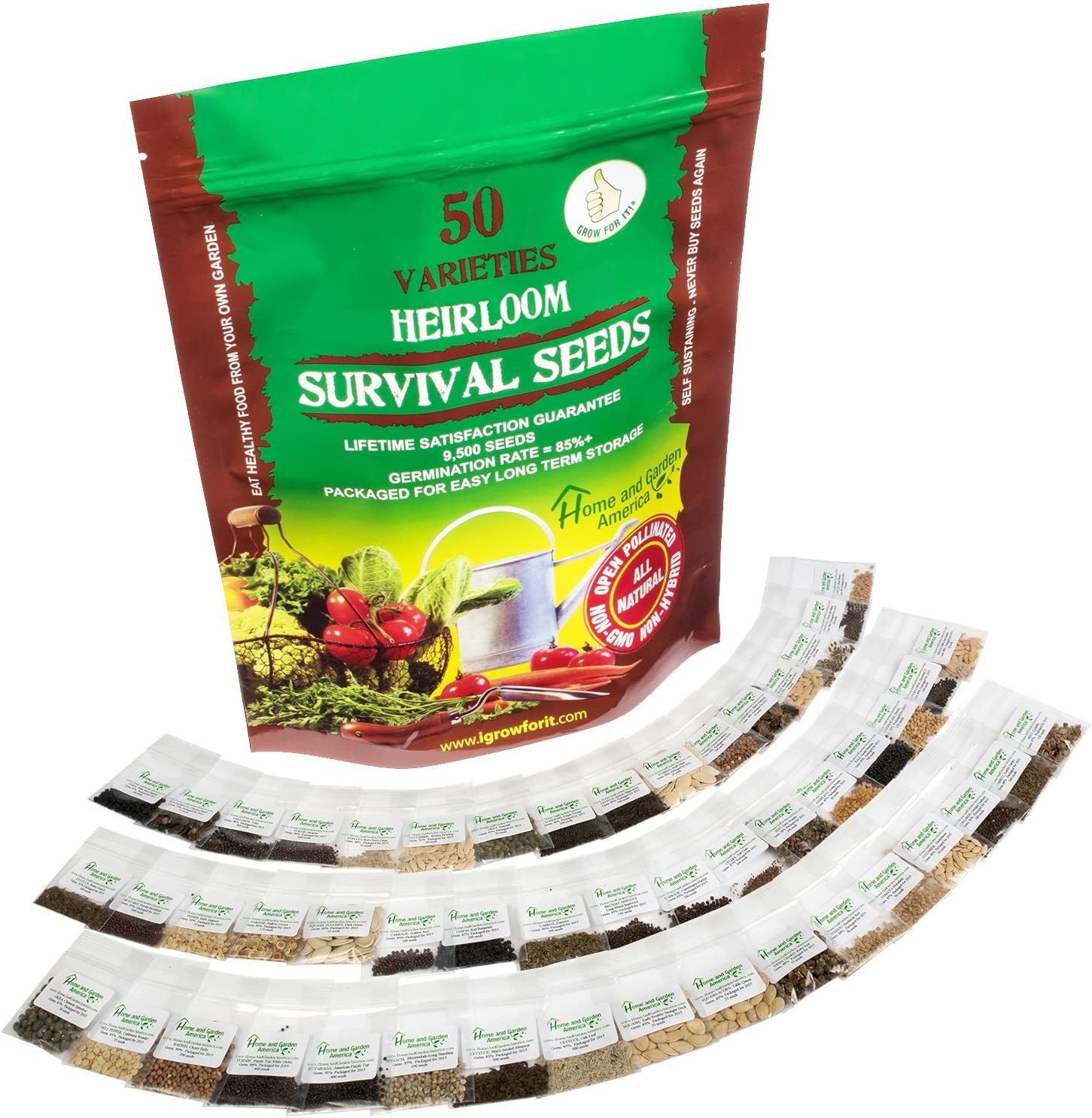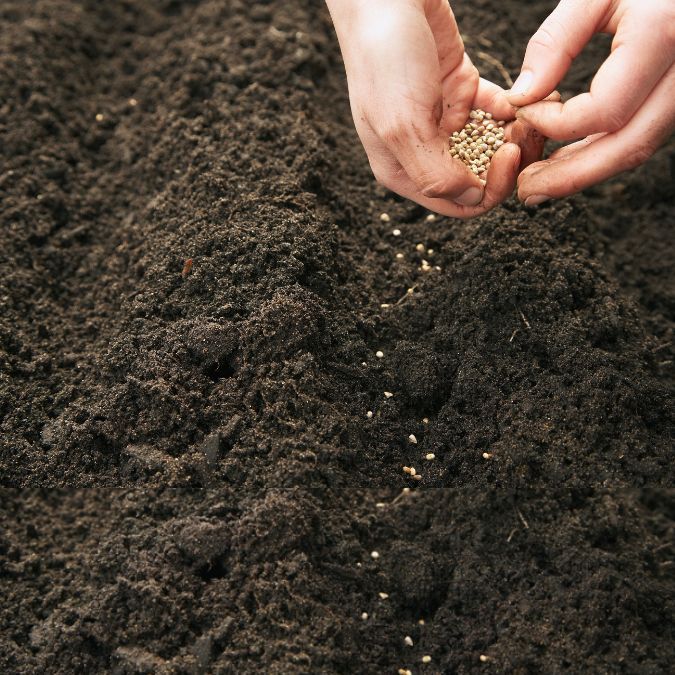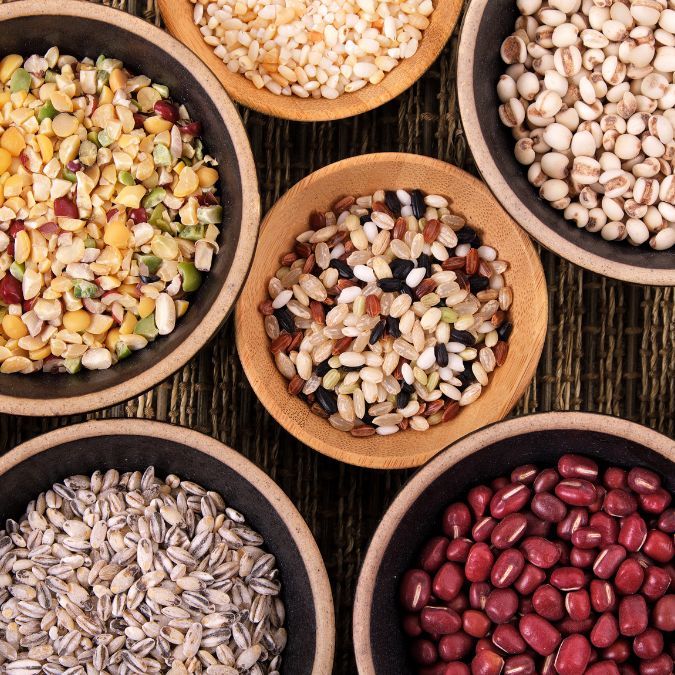
When we talk about survival gardening, we’re not just discussing a hobby; it’s a lifeline. It’s about connecting to the earth, understanding the cycle of life, and most importantly, securing a future for ourselves and the generations to come. Heirloom seeds are the key to this connection, a bridge between the past and future that we hold in the palm of our hands.
Key Takeaways
Heirloom seeds are traditional varieties that have been passed down through generations.
They are non-GMO and open-pollinated, preserving genetic diversity.
Survival gardening with heirloom seeds offers a sustainable food source.
Heirloom seeds adapt over time to local growing conditions, enhancing garden resilience.
By saving and sharing heirloom seeds, we contribute to community sustainability and biodiversity.
Defining Heirloom Seeds
Heirloom seeds are the legacy of our ancestors. They are varieties that have been nurtured, selected, and handed down from one generation to the next, often for hundreds of years. Unlike modern hybrid seeds, heirlooms are open-pollinated, meaning they’re pollinated by insects, birds, wind, or human hands. This natural process ensures that the seeds retain their unique characteristics year after year.
Here’s the simple truth: heirloom seeds are non-GMO. They haven’t been altered in a lab. They are the real deal, packed with history and flavor that you just can’t find in mass-produced seeds. And because they’ve been saved and selected for their excellent performance in specific local environments, they are uniquely adapted to the climates where they’ve been grown.
Why Heirloom Seeds Are Critical for Survival Gardens
Survival gardens are more than just a source of fresh produce; they’re a safety net in times of uncertainty. And in such gardens, heirloom seeds shine the brightest. They are the superheroes of the seed world because they are:
Adaptable: They evolve over time to thrive in local conditions.
Diverse: A wide range of varieties means a garden that’s less susceptible to being wiped out by disease or pests.
Nutrient-Rich: Many heirlooms have been shown to contain more vitamins and minerals than their commercial counterparts.
Heirloom seeds are not just about survival; they’re about thriving. They help us grow food that’s resilient, nutritious, and, most importantly, sustainable. They’re about taking control of our food supply, one seed at a time.
Tapping into Ancestral Wisdom
Our ancestors knew something we’re just remembering: biodiversity is essential to survival. They didn’t have grocery stores or global shipping. They had their gardens, their knowledge, and their seeds. These seeds were their insurance policy against famine, disease, and the changing climate.
Ancestral Farming Techniques
What did our ancestors do differently? They observed. They learned. They adapted. They didn’t rely on single crops; they planted a variety of seeds to ensure a diverse harvest. This way, if one crop failed, they still had others to rely on. It’s a practice known as polyculture, and it’s a lesson we need to revisit.
They also practiced crop rotation and companion planting, two techniques that are as useful today as they were centuries ago. By rotating crops, they prevented soil depletion, and with companion planting, they naturally repelled pests and improved pollination. These are time-tested strategies that work without the need for chemicals.
Cultivating Resilience Through Biodiversity
Biodiversity is not just a buzzword; it’s the backbone of a healthy ecosystem. And in your garden, it starts with the seeds you plant. Heirloom seeds contribute to biodiversity by bringing a variety of plants into your space, each with its own role to play in the health of your garden.
And let’s not forget, biodiversity isn’t just good for your garden; it’s good for you too. It means a wider array of nutrients on your plate and a more resilient food system on your table.
Now, let’s dig a little deeper into what makes heirloom seeds truly special, and why they should be the cornerstone of your survival garden.
Planting an Heirloom Garden: A Step-by-Step Guide

Starting an heirloom garden is an adventure that reconnects us with our roots. It’s about more than just planting seeds; it’s about cultivating a piece of history and ensuring its survival. So, how do you begin this rewarding journey? Let’s walk through the steps together.
Choosing the Right Seeds for Your Climate
First things first, you’ll want to select seeds that are well-suited to your local climate. This is crucial because heirloom seeds have been passed down in specific regions for their ability to thrive there. To get started:
Research the history of seeds that are native or have been grown in your area for generations.
Consult local gardening groups or agricultural extensions for advice on what grows best in your region.
Consider your local weather patterns, soil type, and the amount of sunlight your garden will receive.
Remember, the key to a successful heirloom garden is working with nature, not against it. By choosing the right seeds, you’re setting yourself up for a bountiful harvest.
Best Practices for Planting and Growing Heirloom Varieties
Once you’ve selected your seeds, it’s time to plant. But before you get your hands dirty, let’s go over some best practices:
Timing is everything: Plant your seeds after the last frost date in your area to ensure they don’t get damaged by cold weather.
Soil matters: Prepare your garden bed with rich, well-draining soil. Heirloom plants love nutrient-dense earth, so consider adding compost or aged manure to give them a boost.
Space them out: Give each plant enough room to grow. Crowding can lead to competition for resources and increase the risk of disease.
Water wisely: Heirloom plants often have deep roots, so water less frequently but deeply to encourage strong growth.
With these tips in hand, you’ll create a thriving environment for your heirloom plants to flourish.
The Role of Heirloom Seeds in Eco-Friendly Gardening
Heirloom seeds don’t just benefit your garden; they play a significant role in creating a more sustainable world. By choosing to plant these seeds, you’re contributing to an eco-friendly gardening movement that has far-reaching benefits.
Encouraging Sustainable Agricultural Practices
By growing heirloom varieties, you’re participating in sustainable agricultural practices that have been honed over centuries. These practices include:
Using natural pest control methods instead of relying on harmful chemicals.
Conserving water through smart irrigation and mulching.
Improving soil health by practicing crop rotation and using organic fertilizers.
These methods not only help your garden but also contribute to the overall health of the planet.
Bolstering Eco-Systems With Native and Adaptive Plants
Heirloom plants are often native or have become well-adapted to the regions they grow in. This means they can:
Support local wildlife, providing food and habitat for beneficial insects and birds.
Help maintain the natural balance of your local ecosystem.
Require less maintenance and fewer resources than non-native plants, reducing your garden’s environmental footprint.
By incorporating heirloom plants into your garden, you’re not just growing food; you’re nurturing a mini-ecosystem that supports and sustains a rich variety of life.
Example: The ‘Mortgage Lifter’ tomato, an heirloom variety, was developed in the 1930s and is known for its exceptional flavor and robust growth in diverse conditions. By choosing to grow this plant, you’re enjoying a taste of history while supporting sustainable gardening practices.
Passing the Seed: Saving and Sharing Heirloom Varieties

The beauty of heirloom seeds is that they can be saved and shared, creating a living legacy that grows with each season. This practice not only preserves the genetic diversity of our food crops but also fosters a sense of community and shared responsibility.
Techniques for Harvesting and Storing Seeds
To ensure the longevity of your heirloom seeds:
Wait for the seeds to mature fully on the plant before harvesting.
Clean the seeds thoroughly to remove any plant material or debris.
Dry the seeds completely to prevent mold or rot during storage.
Store the seeds in a cool, dry place, ideally in airtight containers.
With proper care, your seeds can remain viable for years, ready to sprout when you—or someone you share them with—are ready to plant.
Building Communities Around Seed Exchange Programs
Seed saving is more than a solitary endeavor; it’s a community-building activity. By participating in seed exchanges, you can:
Meet like-minded gardeners and learn from their experiences.
Access a wider variety of seeds than you might find in stores.
Help preserve rare or endangered plant varieties that might otherwise be lost.
These exchanges are not just about swapping seeds; they’re about swapping stories, tips, and a shared passion for sustainable living.
In conclusion, heirloom seeds are not relics of the past; they are the seeds of the future. By choosing to plant them, we honor the wisdom of our ancestors, protect the diversity of our planet, and take an active role in creating a more sustainable world. So, let’s roll up our sleeves, get back to our roots, and plant an heirloom garden that will nourish not just our bodies, but our souls and the earth itself.
Combating Climate Challenges with Heirlooms
Climate change poses a serious threat to global food security, but heirloom seeds offer a glimmer of hope. These seeds, with their time-tested resilience, can be the key to adapting our agriculture to a changing climate. They’ve been naturally selected over generations for their ability to withstand the specific challenges of their native environments, making them a wise choice for uncertain futures.
Heirloom Seeds in the Face of Climate Change
Heirloom seeds bring to the table a robustness that many modern cultivars lack. They’ve weathered droughts, floods, and pests long before the advent of agricultural technology. This resilience is precisely what we need as we face more frequent and extreme weather events. By cultivating heirloom varieties, we’re harnessing centuries of natural selection that have equipped these plants to survive—and even thrive—in the face of adversity.
Moreover, heirlooms can play a pivotal role in carbon sequestration. Deep-rooted heirloom plants can store more carbon in the soil than their shallow-rooted counterparts, contributing to the mitigation of greenhouse gas emissions. It’s a win-win: we get delicious, nutritious produce while helping to combat climate change.
Supporting Local Food Systems and Fostering Resilience
Heirloom seeds are about more than just individual gardens; they’re about building resilient local food systems. By growing and sharing these seeds, we create networks of food production that can stand up to the challenges of climate change. Localized food systems reduce the need for long-distance transportation, cutting down on carbon emissions and building community self-sufficiency.
These systems aren’t just good for the environment; they’re good for the economy, too. By keeping food production local, we support local farmers and businesses, keeping money within the community and strengthening local economies.
FAQs
Got questions about heirloom seeds? You’re not alone. Here are some of the most common queries gardeners have when starting with heirlooms:
What Are the Most Popular Heirloom Seeds for Beginners?
For those just starting out, here are some beloved heirloom seeds that are easy to grow and manage:
‘Brandywine’ Tomato: Known for its rich flavor, this tomato is a garden favorite.
‘Boston Pickling’ Cucumber: Perfect for pickling, this cucumber is prolific and easy to grow.
‘Scarlet Nantes’ Carrot: Sweet and crisp, this carrot variety is a classic and forgiving for new gardeners.
‘Bloomsdale’ Spinach: A hardy variety that can tolerate both heat and cold.
‘Lacinato’ Kale: Also known as ‘Dinosaur Kale’, it’s robust and packed with nutrients.
How to Identify True Heirloom Seeds?
To ensure you’re getting true heirloom seeds, look for these indicators:
Check the seed’s history: True heirlooms have been passed down for at least 50 years.
Buy from reputable sources: Choose companies or seed exchanges known for their commitment to heirloom preservation.
Labeling: Look for packages labeled as ‘heirloom’ or ‘heritage’ seeds.
Remember, with heirlooms, you’re not just buying seeds; you’re buying a story and a piece of history.
Can Heirloom Plants Survive in Any Climate?
While heirloom plants are adaptable, they’re best suited to the climates where they’ve been traditionally grown. When choosing heirloom seeds, consider varieties that are known to thrive in your specific climate. That being said, many heirlooms can adapt over time to new conditions, so don’t be afraid to experiment with different varieties.
What Are the Best Ways to Source Heirloom Seeds?
There are several great ways to source heirloom seeds:
Local seed libraries or exchanges: These are fantastic resources for finding seeds adapted to your area.
Specialty seed catalogs and online stores: Look for companies that specialize in heirloom seeds.
Gardening clubs or societies: Fellow gardeners are often willing to share their favorite heirloom seeds.
Farmers’ markets: Some vendors sell heirloom seeds in addition to produce.
And remember, once you start growing heirlooms, you can save your own seeds for next year’s garden or to share with friends and neighbors.
How Do Heirloom Seeds Contribute to Biodiversity?
Heirloom seeds are biodiversity champions. Each variety is genetically unique, which contributes to the overall genetic diversity of plant species. This diversity is crucial for healthy ecosystems and for providing a buffer against widespread crop failure. By growing heirlooms, you’re helping to maintain a wide range of plant genetics, which is vital for the resilience of our food systems.







Leave a Reply